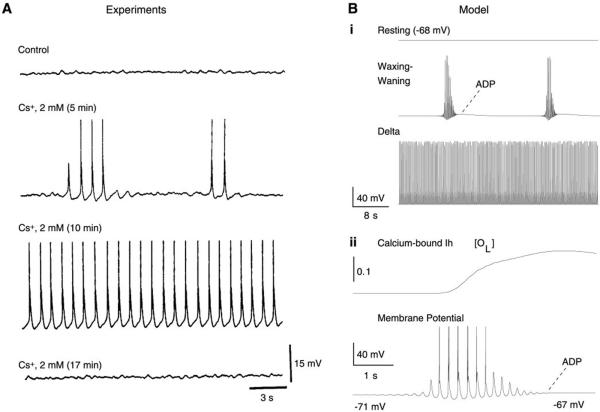FIG. 3.
Intrinsic oscillatory properties of thalamic relay neurons. A: intracellular recordings of a cat thalamic relay neuron in vitro showing different oscillatory modes following application of cesium (Cs+). Cs+ was applied extracellularly to a cell that had no spontaneous oscillations (control). Four minutes after the application of Cs+, spontaneous waxing-and-waning oscillations began (silent periods of 4–9 s and oscillatory sequences lasting for 2–6 s). After an additional 4 min, the oscillations became sustained (frequency of 1–2 Hz) and persisted for ~6 min before all activity ceased. [Modified from Soltesz et al. (290).] B: computational model of intrinsic oscillations in thalamic relay cells. The model had a calcium-mediated regulation of Ih. i: Three different modes with different conductance values of Ih. From top to bottom: relay state (gh = 0.025 mS/cm2), slow waxing-and-waning (“spindle-like”) oscillations (gh = 0.02 mS/cm2), and delta oscillations (gh = 0.005 mS/cm2). ii: Intrinsic waxing-and-waning oscillation at higher time resolution. Top trace shows the fraction of channels in the calcium-bound open state (OL), and the membrane potential is shown at bottom. [Modified from Destexhe et al. (96).]

